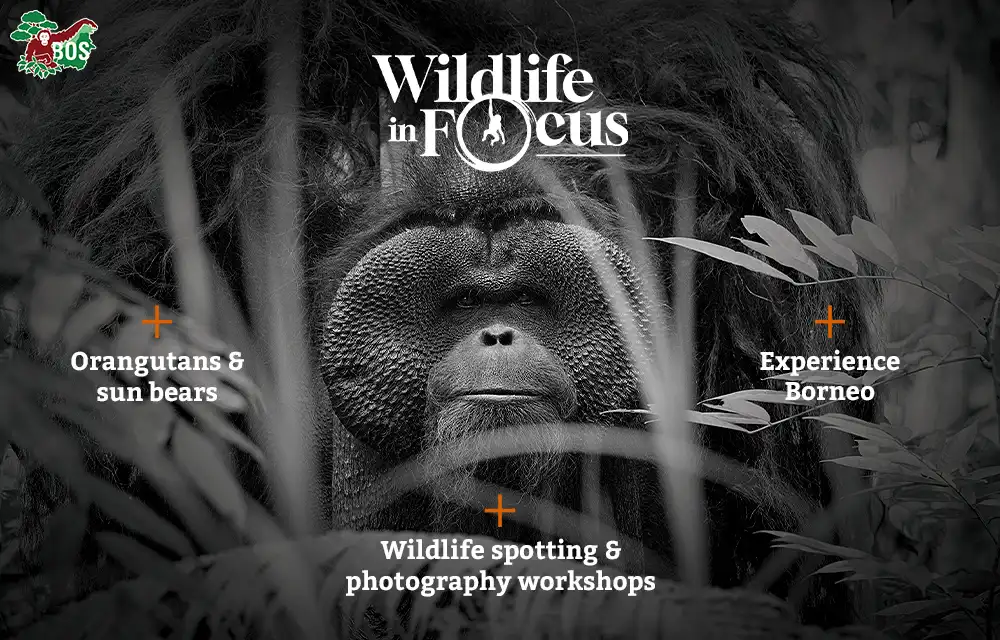As we know, orangutans (Pongo spp.) are known as arboreal primates. Most of their activities involve navigating the forest canopy using a combination of climbing, crawling, and brachiation. Another fact is that orangutans share 97% of their DNA with us—humans. This similarity raises a follow-up question: Can orangutans swim?
Orangutans’ Swimming Ability
In general, orangutans are not natural swimmers. They tend to avoid water and are rarely seen swimming. Several studies and observations, both in the wild and in rehabilitation centers, have shown that orangutans tend to avoid deep water. This indicates that they behave differently from their close relatives, such as chimpanzees and bonobos, who have better swimming abilities.
According to research published by Bender et al. (2013) in the *American Journal of Physical Anthropology*, hominoids, including humans, are known for their inability to swim instinctively. They are also known to have a fear of deep water and tend to avoid it in their natural habitats, both in Borneo and Sumatra. This research also explains that orangutans are only seen engaging in activities around shallow water and do not demonstrate significant swimming abilities.
Their adaptive focus is more strongly oriented towards arboreal life. This has resulted in reduced opportunities for them to interact with water, thus automatically diminishing their innate swimming behaviour. The study by Bender also mentions that apes have a limited ability to cope with negative buoyancy, even more so than other terrestrial mammals like dogs, which use all four legs for walking.
Their Adaptation to Water-Rich Environments
Although orangutans do not have strong swimming abilities, they can adapt to environments with abundant water sources. In some cases, orangutans have been seen using logs or fallen trees to cross rivers or swamps. For example, the orangutan Sayang and her child, Padma. Our Post-Release Monitoring (PRM) team in the Kehje Sewen Forest has observed this mother and child crossing the Pehpan River multiple times. Another surprising observation is that this resilient mother also crossed a fallen tree connecting two sides of the river in the area.

Additionally, orangutans’ adaptation to water-rich environments is also evident in how they forage. Orangutans are capable of foraging around shallow water and using simple tools to obtain drinking water or find food in the mud. So, even though they are lacking in swimming ability, orangutans have creative ways to solve problems in front of them using tools and materials they find in nature.
Research by Russon et al. (2014) published in the *Journal of Human Evolution* shows that rehabilitated orangutans on the pre-release islands of Kaja and Palas, Central Kalimantan, utilize shallow water to forage for small fish and aquatic plants. This research also reveals a new finding that rehabilitated orangutans might be getting protein not only from insects but also from other aquatic animals. They also use twigs or leaves to obtain food from the mud or shallow water. This demonstrates a high level of adaptation between orangutans and water-rich environments.

Can Orangutans Swim?
So, although orangutans are not natural swimmers and tend to avoid deep water, they show a good ability to adapt to environments with abundant water sources. They use simple tools and take advantage of shallow water to forage for food and drink. Further studies are needed to fully understand orangutans’ adaptive abilities to water-rich environments and how this affects their survival.
Reference:
- Bender, R., & Bender, N. (2013). Brief communication Swimming and diving behaviour in apes (Pan troglodytes and Pongo pygmaeus) First documented report. American Journal of Physical Anthropology, 152(1), 156-162.
- Russon, A. E., Compost, A., Kuncoro, P., & Ferisa, A. (2014). Orangutan fish eating, primate aquatic fauna eating, and their implications for the origins of ancestral hominin fish eating. Journal of Human Evolution, 77, 50-63.
Text by: Communication Team, BOS Foundation Headquarters, Bogor, West Java
Will you help us rescue, rehabilitate and release orangutans back to freedom? Thank you!





